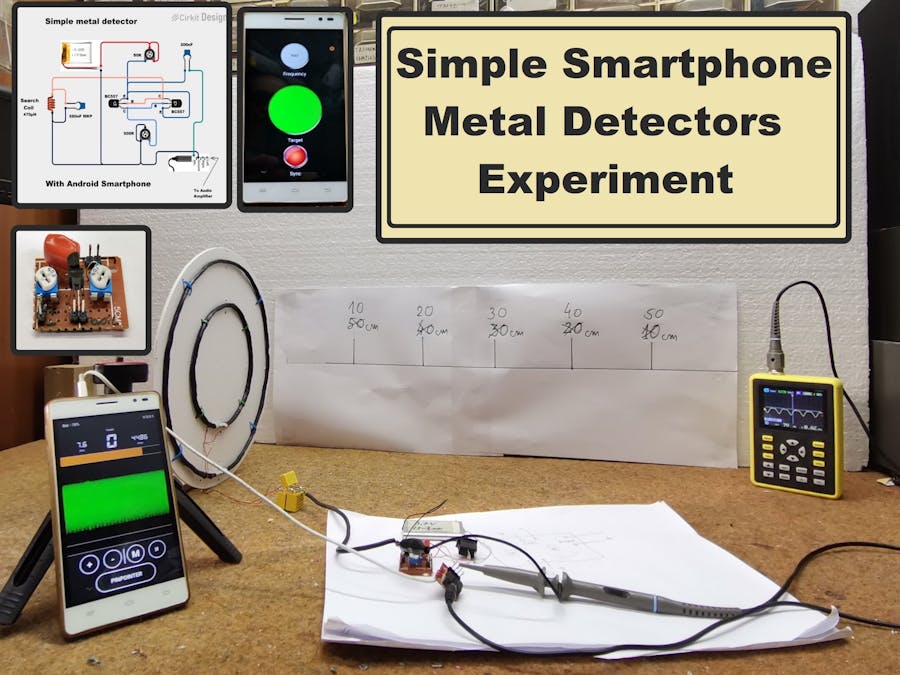This time I will try to describe the principle of operation of a simple Metal detectors in which data is processed by a smartphone. The main principle of this detectors consists of LC oscillator which serves as a reference, and on the other side a smartphone application, which is basically a frequency meter. When we put a metal object near to the coil the frequency changes and application detect the change and signalize that there is are metal object near the coil.
The oscillator consists of a parallel LC oscillator circuit and two transistors. The frequency of this oscillator depends on the inductance of the coil and the capacitance of the capacitor. I also put two trimmer potentiometers instead of resistors so we can change the amplitude and partial shape of the signal to make it easier to process in the smartphone app. I have experimentally found that the detector has the best sensitivity when the signal has an amplitude of about 100 millivolts and has a shape approximately as seen on the video.
When it comes to signal processing, let me mention that in this experiment I use the great apps of the Neco Desarrollo team "Smart Hunter" and "MFM3 Pinpointer" which are the only Android apps of this kind in the World. You can download the free versions at the provided link:
Specifically, my coil consists of two windings connected in series, the larger one with a diameter of 23 cm, and the smaller one with 12 cm. Both are wound with lacquered wire with a diameter of 0.4 mm and contain 25 turns each. You can also make a custom coil with an inductance of approximately 500 µH, and you can easily calculate the number of turns and the diameter with one of the online calculators. It is important that the resonant frequency of the parallel LC circuit is in the range of 4Kz to 20KHz so that it can be processed by the Smartphone. We can read this frequency directly on the application.
By pressing the Balance button application measure the frequency and remember it as a reference. With "+" and "-" Buttons we can change Sensivity of the detector. Now if we move a metal object close to the coil, this frequency changes and it is displayed on the application visually and audibly on speaker. To have an audio indication I connected the Power Amplifier to the output of the headphone jack. The change in signal frequency is clearly visible on the oscilloscope. As we will see later, the sensitivity of the detector is relatively good, considering that the construction is extremely simple.
There is another very interesting application, "MFM3 Pinpointer". This is also a Metal Detector application that can distinguish between ferrous or nonferrous materials. When it starts, we can see the frequency of the oscillator circuit. Then we press the Screen button and now we can start scanning different materials. If we approach nonferous material, green colour appears, and if we approach ferrous material, red colour appears. We can notice that in the first case the frequency increases, and vice versa with ferrous material decreases. Sensitivity can also be adjusted in the program settings.
Finally, let me conclude that this is a very simple version of a metal detector, so it does not have any great sensitivity, but it serves well for educational purposes. To emphasize that it is very unstable, the frequency depends a lot on the temperature, so more frequent calibration is needed. In my previous videos I have presented almost all the metal detectors by Neco Desarrollo or their variations so if you want to make one of them, you can watch them.
















Comments
Please log in or sign up to comment.